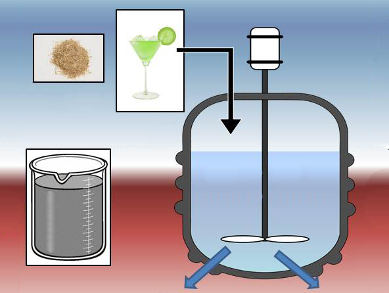Many often-used organic solvents are, for example, flammable, toxic, or carcinogenic, and can cause safety problems and high production costs. From a purely “green” viewpoint, water would seem to be the perfect solution, but its use is limited, often due to low solubility of the reactants or competing hydrolysis reactions.
Also biocatalysts – catalysts that use, or are derived from enzymes – can make reactions more environmentally friendly. Already being successfully integrated into modern organic synthesis, they possess distinct advantages over traditional inorganic catalysts, which are often expensive and/or use toxic metals that are difficult to remove from the final products. Removing residual traces raises the production, and therefore, also the product costs.
Robert A. Sheldon, University of Witwatersrand, Johannesburg, South Africa, has reviewed environmentally and economically friendly alternatives to standard solvents in biocatalytic and biomass conversion chemical processes. Ionic liquids (ILs) have advantages such as low vapor pressure and low toxicities compared with organic solvents. Early examples include imidazole derivatives, such as [bmim][BF4] (1-butyl-3-methylimidazolium tetrafluoroborate), but much work has been done on making such species more stable, efficient and environmentally friendly.
In particular, second-generation ILs derived from readily available, renewable resources, such as cholinium salts, protic ionic liquids (PILs), prepared by mixing inexpensive amines and acids, and deep eutectic solvents (DESs), obtained by mixing inexpensive salts with, preferably renewable, hydrogen-bond donors such as glycerol and amino acids, are environmentally attractive. They are useful for bioconversions of substrates that have limited solubility in common organic solvents, such as carbohydrates, nucleosides, and steroids, in processes that cannot be performed in water owing to competing hydrolysis. They can also play an important role as a solvent, or as a cosolvent with water, in various stages of the conversion of lignocellulosic biomass in second-generation biorefineries.
Sheldon argues that it will be possible to produce second-generation ILs, PILs, and DESs from inexpensive raw materials for prices comparable to those of bulk petrochemicals and to recover and recycle them multiple times, making them economically and environmentally viable.
- Biocatalysis and Biomass Conversion in Alternative Reaction Media,
Roger A. Sheldon,
Chem. Eur. J. 2016.
DOI: 10.1002/chem.201601940




